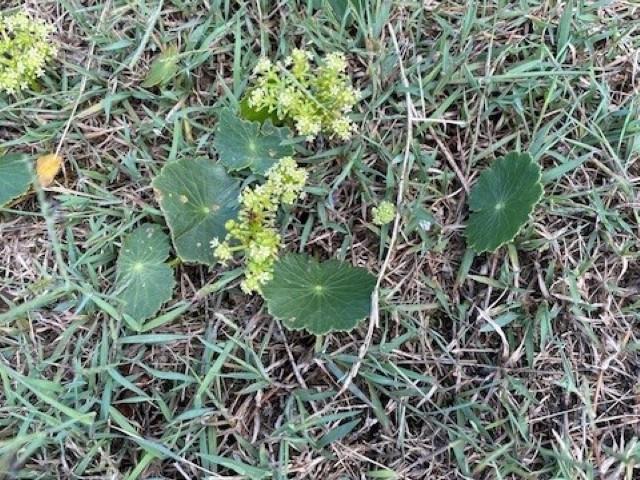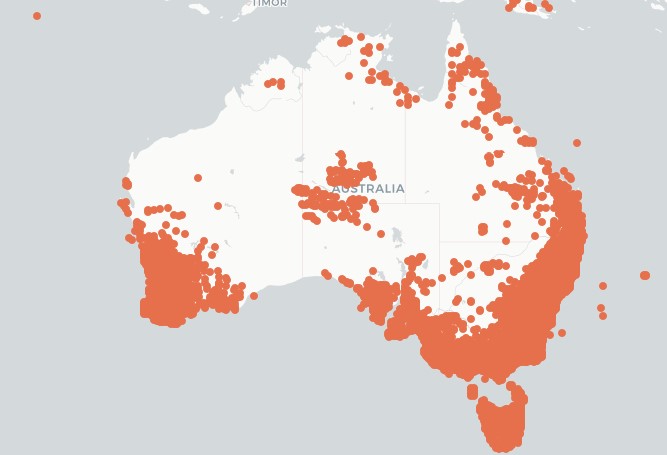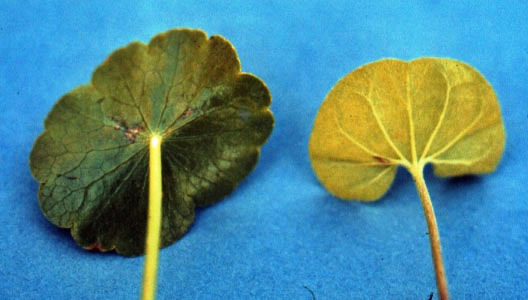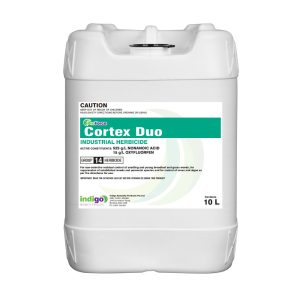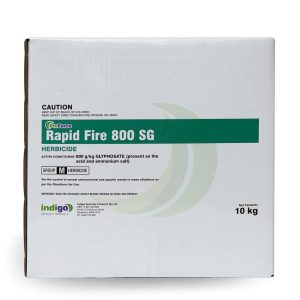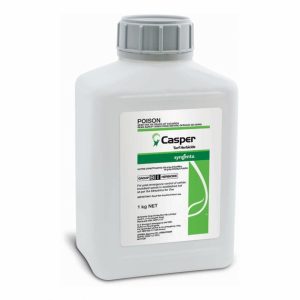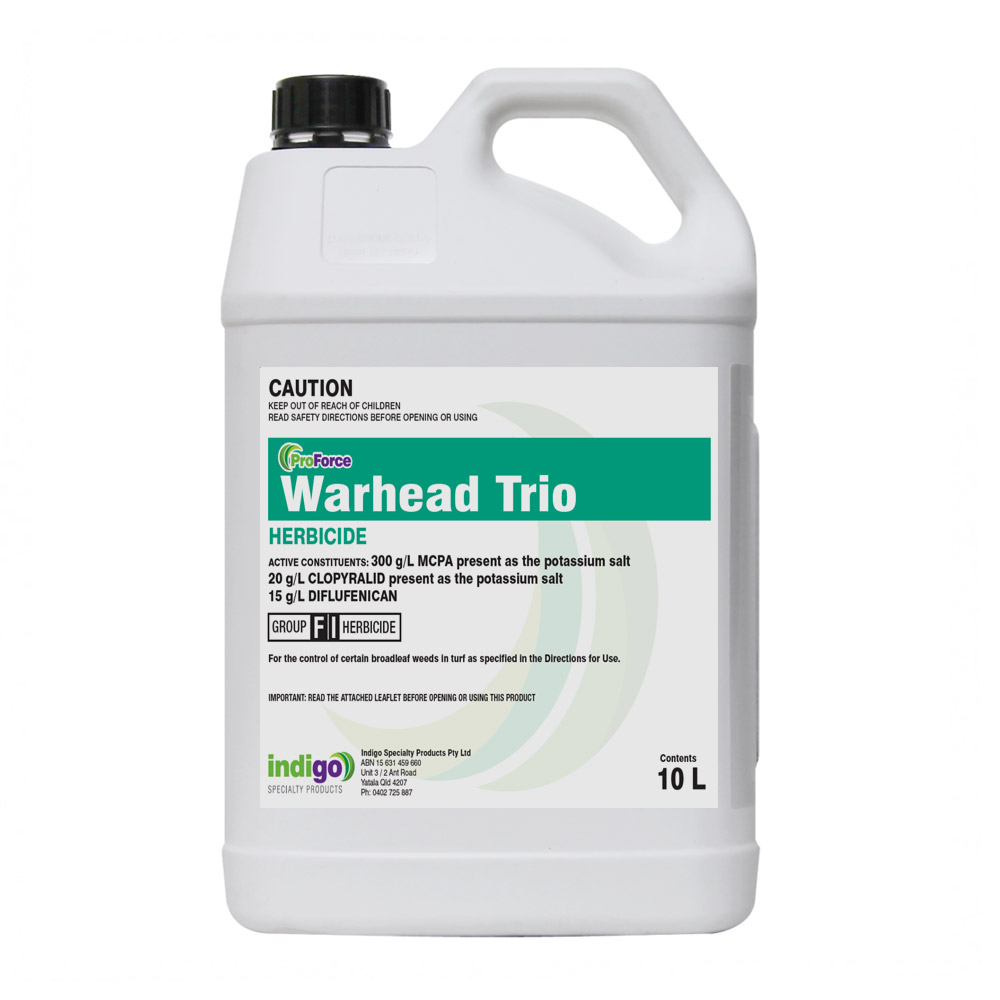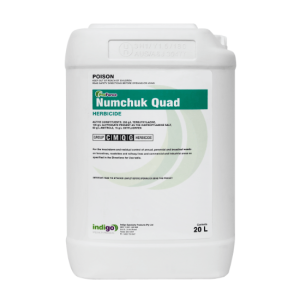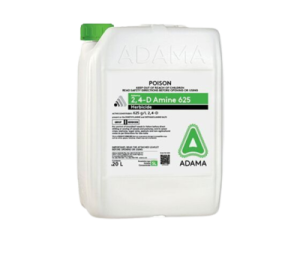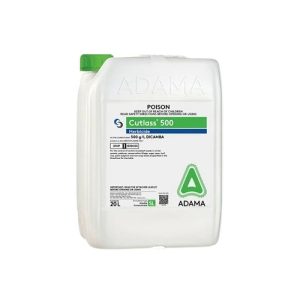Hydrocotyle (Hydrocotyle spp).
Hydrocotyle is also known as Pennywort, Dollarweed and Kurnells Curse. It is a spreading perennial weed, and a problem in wet lawns and turf areas. It has the name Dollarweed because of the shape of its leaves, which resemble a dollar.
After you read this, you will be able to:
- Identify Hydrocotyle.
- Know the habitat of Hydrocotyle.
- Know the best cultural and chemical options to control Pennywort.
Why is Hydrocotyle a Problem Weed?
- It is very aggressive and forms dense mats that outcompetes existing vegetation.
- Dollarweed or hydrocotyle is difficult to control because it spreads and establishes quickly.
- Pennywort spreads by seeds, rhizomes, and tubers.
Hydrocotyle or Pennywort is a good indicator weed of wet soils.
For more information, please check out our weed ID chart.
As the distribution map of Australia shows Hydroctyle is pretty much widespread throughout Australia. Thanks to The Atlas of Living Australia.
Hydrocotyle Identification.
Hydrocotyle has horizontal creeping stems called rhyzomes, and it roots at each node. Each of these rhyzomes produces several nodes that grow into an individual leaf which has roots. These roots then produce new rhyzomes, and these again then produce new leaf plants.
This continues over and over again and before you know it Hydroctyle dominates large parts of your lawn.
Category: Hydrocotyle is a broadleaf (Dicot) weed.
Photosynthetic Pathway: Dollarweed is a C3 Weed.
Flower: Hydrocotyle has yellow or white flowers and are elongated spikes at the top of stalks. These can be present all year round, but are mainly seen from October to February.
Height: Pennywort is a prostrate weed.
Leaf Width: The leaf blade of Kurnell Curse is circular to elliptical, and is 25 to 50 mm in diameter.
Reproduction: Hydrocotyle spreads via seeds, rhizomes, and sometimes by tubers.
Comments: The dull, hairless green leaf of Dollarweed, has a roughly scalloped edge. The leaf divides into distinct segments. When you crush Kurnells Curse, it gives off a strong smell.
Hydrocotyle is often mistaken for Kidney Weed, and sometimes Creeping Charlie.
- A good way to tell Hydrocotyle and Kidney Weed apart is to look at where the leaf stem joins the leaf. The stem of Kidney Weed is at the edge of the leaf, while the stem of Hydrocotyle is in the centre.
- With Creeping Charlie the stem attaches at the edge of the leaf, and the leaf has jagged edges.
Table of Differences Between Dollar Weed/Hydrocotyle and Kidney Weed/Dichondra.
Plant | Leaf Shape | Leaves | Stem Placement |
Dollarweed (Pennywort) | Round | Dull, hairless with a roughly scalloped edge. | Stem grows from centre of the leaf |
Dichondra (Kidneyweed or Ponyfoot) | Kidney shape | Leaves indent where stem connects | Stem grows from edge of the leaf |
Habitat: Hydrocotyle favours moist soil conditions, and thrives in weak, thin turf.
The image below is courtesy of Clemson University.
How to Remove Hydrocotyle from your Lawn.
Cultural to Control of Hydrocotyle.
Cultural or mechanical control is generally unsuccessful. Bearing in mind it favours wet areas begin scouting for this weed when the average air temperatures reach 13°C.
However, you can consider the following:
- Do not over water, and fix any drainage issues that cause wet soils. Dollarweed thrives in wet soils, so if areas don’t drain well improve the drainage and deal with any low spots. Low areas that don’t drain very well are ideal for Hydrocotyle.
- Irrigate properly. The University of Florida has shown that if you reduce the irrigation frequency it results in less Hydrocotyle.
- Mow at the right height for your turf grass. A dense, thick turf cover goes a long way toward the control of Hydrocotyle.
- If shade is an issue manage this. Turf in shade remains damp for longer.
- Hand removal of Hydrocotyle does not work well. What tends to happen is the weak leaf stem snaps off, and leaves the underground rhizomes behind. It then regrows from this.
Mowing to directly control Hydrocotyle is most likely going to result in poor results. This is because although it removes taller plants, those under the mower blades are not affected and can continue to spread.
Hydrocotyle on Bowling Greens.
On a sandy, well drained bowling green or golf green, over watering is a common problem. Growth of Hydrocotyle is most aggressive in damp areas, so if you remove slight hollows and don’t overwater, it discourages Hydrocotyle.
When you mow at a low height of cut, the leaves of Dollarweed tend to be smaller. In unmown areas the leaves are larger, being up to 20 mm in diameter.
Chemical control of Hydrocotyle.
Pre-Emergents for Hydrocotyle.
The following are registered for Hydrocotyle in the USA.
- Gallery and
- Indaziflam (Specticle)
These are pre-emergent herbicides that give some control of Dollarweed in warm-season turfgrasses, but are not currently registered for this in Australia.
Post Emergent Control of Hydrocotyle.
Choose the right herbicide for your turf type and use it in the late Spring and Autumn. Ideally, this is when Pennywort is small, and actively growing. Herbicide effectiveness reduces as this weed matures.
You will need repeat applications to control Hydrocotyle, as one treatment does not deal with this weed.
- Dicamba. (Do not use Dicamba on Buffalo grass).
- Casper Herbicide. (Do not use Casper on Buffalo grass).
- Warhead Trio which is a 3-way mix containing clopyralid and MCPA. Both of these are effective against Dollarweed.
- 2,4-D.
- Contra M. (Do not use Contra M on Buffalo grass as it contains Dicamba.
Table of Post Emergents for Pennywort or Hydrocotyl.
Product | Active | Chemical Group | Rate/Ha | Comments | ||||
2,4-D | 2,4-D | 4 | 1.8-3.2 | Wet foliage thoroughly. DO NOT mow lawn for 1 week before and at least 1 weed after application. DO NOT use on Buffalo grass (WA only). | ||||
Casper | Prosulfuron + Dicamba | 2 + 4 | 800g-1Kg | Apply from Autumn to Spring. Use high rates in cool months or if high weed pressure. Control takes 4 to 6 weeks. Use an NIS at a rate of 0.25 to 0.5% v/v. | ||||
Contra M. | Dicamba + MCPA | 4 | 6.5 L | Apply in 250-400L water. DO NOT use on Buffalo grass. After use do not mow for 2 days before or after application or fertilize within two weeks. | ||||
Dicamba | Dicamba | 4 | 1.2L + 3.2L of 2,4-D Amine 625g/L | Use a minimum of 1000L/Ha water. Do not spray on Buffalo or Bent Grass. | ||||
Warhead | MCPA + Clopyralid + Diflufenican | 4 + 12 | 5 L | You may see discolouration on kikuyu, carpet grass and Queensland blue. Avoid overlapping. Use an NIS. | ||||
The options below are registered for hydrocotyle in the USA but not in Australia.
- Quinclorac.
- Metsulfuron.
- Rimsulfuron.
- Trifloxysulfuron.
Non Selective Control of Hydrocotyle.
You can control Kurnell Curse if you use non-selective herbicides like glyphosate, but be aware that this kills all vegetative material. If you use Glyphosate to control Hydrocotyle, and water quality is an issue, then add the spray buffer ProForce Manta Ray to your spray mix
- Glyphosate (Rapid Fire 800).
Other non selective options like Cortex Duo and Numchuk Quad also kill Hydrocotyle, but then prevent anything growing back for between 3 and 12 months respectively.
- Cortex Duo and
- Numchuk Quad.


